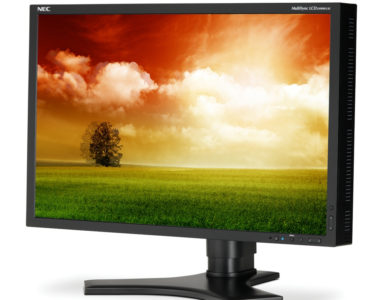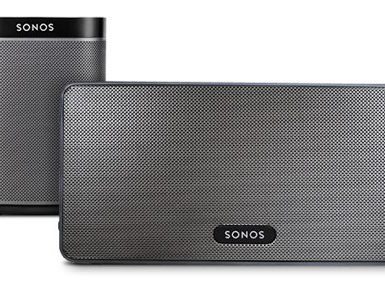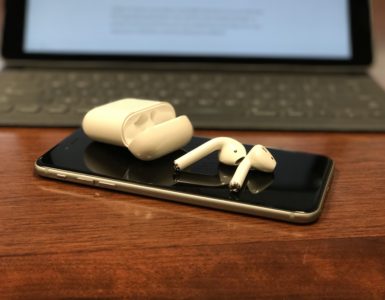 Right on schedule, our new Apple Extreme 802.11n base station arrived today. Because it’s from Apple, I expected to be basking in high-speed 802.11n goodness within seconds of lifting the white, sleek little unit from its cardboard cradle.
Right on schedule, our new Apple Extreme 802.11n base station arrived today. Because it’s from Apple, I expected to be basking in high-speed 802.11n goodness within seconds of lifting the white, sleek little unit from its cardboard cradle.
I connected the Airport Extreme to our cable modem, ran the Airport Utility, and, in seconds, I was surfing the ‘net and pulling email. And, just as quickly … I had problems. Despite the fact the base station was up and running, the status light on front blinked amber, indicating an error. Every time I opened the Airport Utility, my Mac would warn me it had found a base station experiencing an error condition. Worse, none our Windows PCs, Tivos, Slingboxes, or networked printers were able to see or connect to the network.
I pay a premium for Apple products because I don’t want to spend three hours tweaking obscure settings … and yet, here I was, three hours later: frustrated, lost, and angry. I was ready to box the thing up and send it back to Apple … but Clyde, our resident Windows user, intervened. After an additional hour of tweaking obscure settings, we’re on the air. Here’s what we had to do.
1. Blinking amber status light. When you set up your Airport Extreme, you can choose to run an open (unprotected) network or impose WEP or WPA passwords. I’m one of those “share the bandwidth” kind of guys, so I chose to run an open ‘net.
So far, so good … but after I completed the setup, the Airport Extreme’s status light blinked amber, indicating a problem. After lots of Googling, I discovered the problem: even though the setup routine will let you establish an unprotected network, the Airport Extreme is programmed to consider an unprotected network an error!
Add password protection, and the error status goes away. Remove password protection, and the error status returns. If you’re going to run an open network .. get used to seeing that amber light blink.
2. The Amazing Invisible Network. Clyde’s Windows XP desktop never saw the Apple base station, not even when we installed the Windows version of the Apple Airport Utility. In the end, the only way to get the PC connected was to force it to join an unseen network.
Within the Wireless Network Connection utility — where we could see every network in the neighborhood but our own — we had to choose “Change Your Advanced Settings.” Then, we went to the wireless networks tab and clicked the ADD button. In the Wireless Network Properties dialog box, we had to manually enter the name of our network in the “Network Name (SSID)” field, and then manually enter the network keys.
After we did this, the Windows XP machines connected without a hitch … but stumbling on this approach took more than an hour of experimenting with obscure network settings. (After you connect this way, the PC does see the network. Go figure.)
3. Getting WPA’ed. Annoyed by the blinking amber status light, we finally added password protection to our network. The Apple Airport Utility gave us only three options: a 13-character WEP password, an 8- to 63-character WPA password, or no password at all. We selected the WPA2 password option and entered a simple 8-letter password … but after we did that, neither our PCs nor our Macs could connect to the network, even when we typed the password in correctly.
Ultimately, on the PC, we looked up our old hexadecimal password — a 36-character monstrosity no one can remember or guess — and used that as our WPA2 password, just to see what would happen. When we entered that password into our PCs and Macs … we were still dead in the water. (My Mac kept saying my password was wrong.)
Finally, quite by chance, we discovered that the hexadecimal password must use upper-case letters only. When we entered the hexadecimal password into the Airport Utility and our computers using nothing but upper-case letters, everything finally worked.
We had to enter the same 36-character password into our Tivo and Slingbox settings, too; after we did (and after we reset those devices by turning them off and back on) they, too, could see the network and sign on.
4. Still No Printer. Our printer — connected to the network by a wireless Ethernet bridge — is still in la-la land. Clyde’s chipping away at its resistance … but no luck yet.
I’m a huge fan of Apple — heck, I wrote a book encouraging people to switch! — but frankly? I was surprised and disappointed that the Airport Extreme 802.11n created so many problems and required so much teasing and tweaking before it would communicate with our PCs and other network-aware boxes.
Had it been marketed as a “Mac-only” box, that’d be one thing. But Apple is marketing this as a solution that works with both Apples and PCs — and it will, but not with that trademark “It Just Works” simplicity.





Add comment